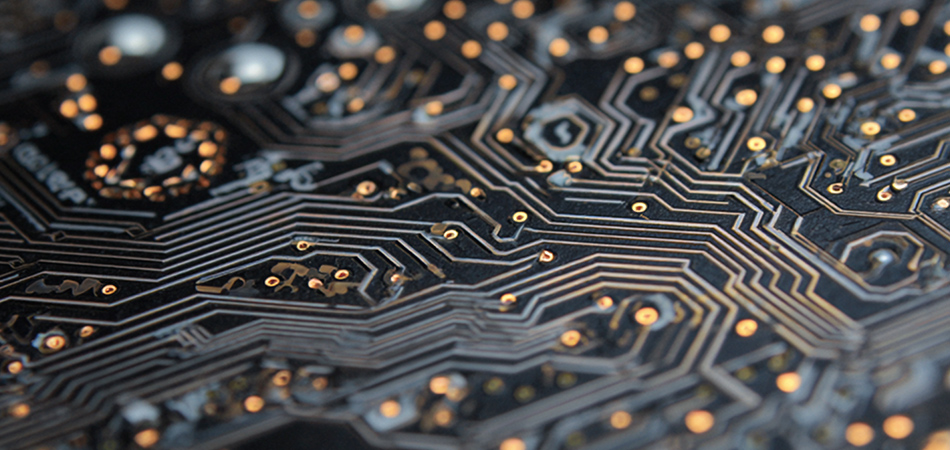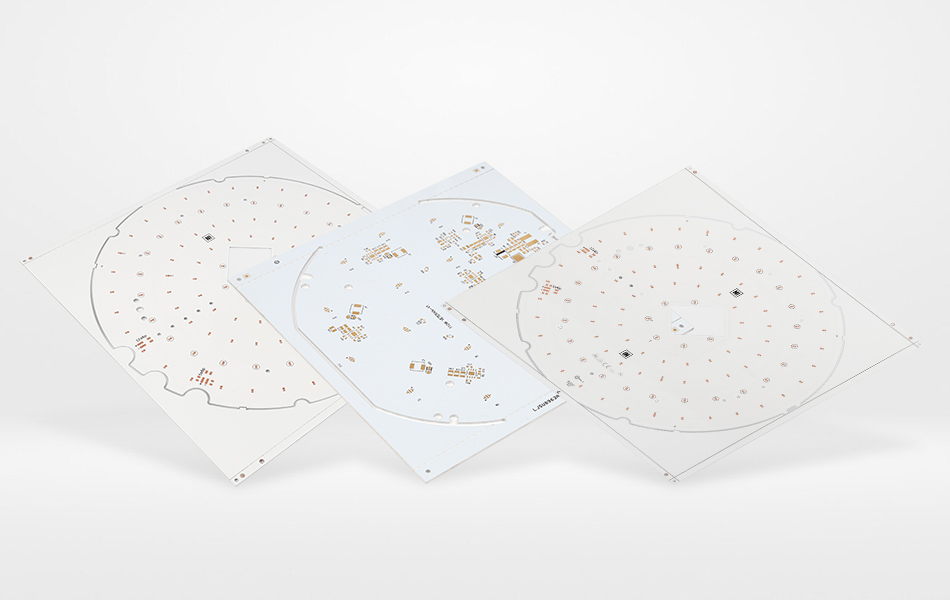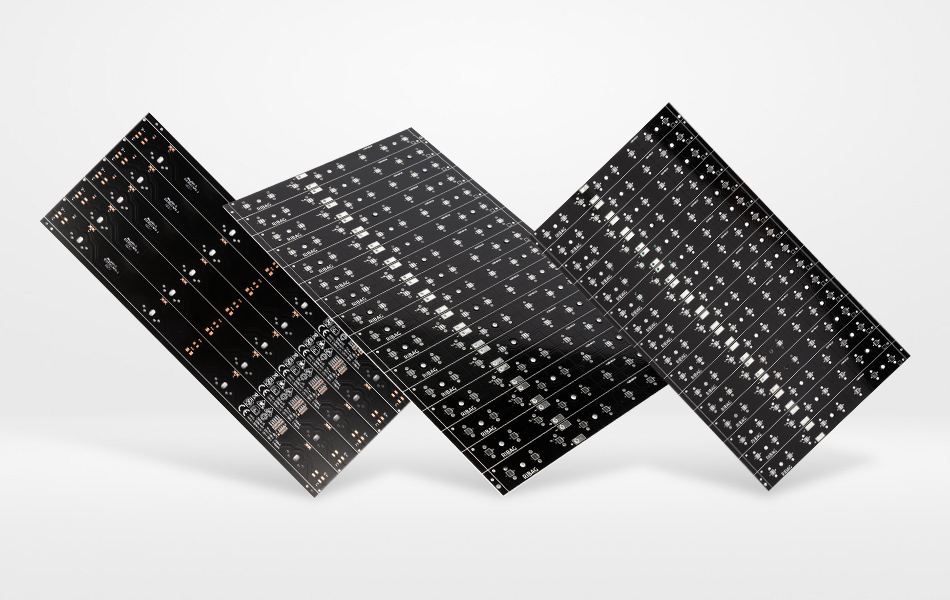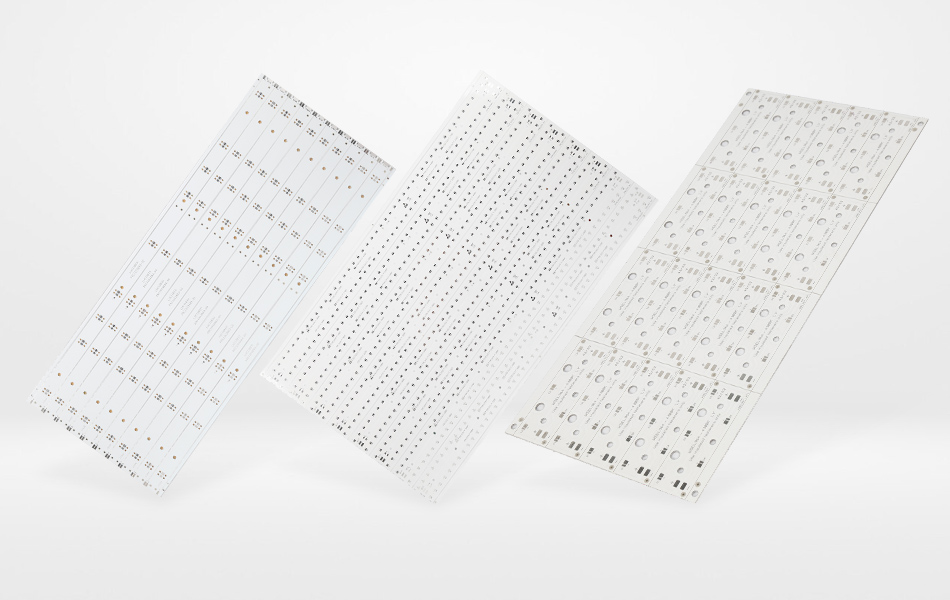-
- PCB TYPE
- PRINTED CIRCUIT BOARD PROTOTYPE ALUMINUM PRINTED CIRCUIT BOARD R&F PCB FPC HIGH FREQUENCY PCB HIGH-TG PCB HEAVY COPPER PCB HDI PCB PCB FOR LIGHTING METAL CORE PCB
time:Jun 24. 2025, 08:34:36
In the rapidly evolving electronics landscape, the demand for innovative printed circuit board (PCB) solutions has never been higher. As electronic devices become more compact, versatile, and adaptable, traditional rigid PCBs often struggle to meet the complex design requirements. Enter flexible bendable aluminum PCBs, a cutting - edge technology that combines the benefits of flexibility and high - performance thermal management. These unique PCBs leverage the properties of aluminum to offer superior heat dissipation capabilities while enabling designers to create complex, curved, and space - optimized electronic designs. This article explores the structure, advantages, design considerations, manufacturing processes, applications, and market trends of flexible bendable aluminum PCBs, highlighting their significance in shaping the future of electronics.
Structure of Flexible Bendable Aluminum PCBs
Layer Composition
Flexible bendable aluminum PCBs feature a sophisticated multi - layer structure designed to balance flexibility, electrical functionality, and thermal performance.
Aluminum Core: At the heart of these PCBs lies a specialized aluminum layer. Unlike traditional rigid aluminum PCBs, the aluminum core in flexible versions is engineered with enhanced ductility to withstand bending and flexing without damage. This core serves as the primary thermal conductor, efficiently dissipating heat generated by components. Its unique properties ensure that even in bent or curved configurations, the aluminum core can effectively transfer heat away from critical areas, maintaining optimal operating temperatures.
Flexible Dielectric Layer: Sandwiching the aluminum core is a flexible dielectric layer. This layer plays a dual role: providing electrical insulation between the aluminum core and the conductive copper traces, and enabling the PCB to bend and flex. Made from advanced polymers with high flexibility and good thermal conductivity, the dielectric layer is often reinforced with additives or fibers to enhance its mechanical properties. These materials are carefully selected to maintain their integrity under repeated bending, ensuring long - term reliability.
Copper Traces: The outer layers consist of copper traces, which are patterned to form the electrical circuits. Similar to other PCBs, the copper in flexible bendable aluminum PCBs offers excellent electrical conductivity. However, in these flexible designs, the copper traces are often fabricated using techniques that allow them to stretch and bend without cracking or breaking. This is achieved through the use of thin - film copper, specialized plating processes, or the incorporation of flexible copper alloys.
Material Selection
Material selection is crucial in determining the performance of flexible bendable aluminum PCBs.
Aluminum Alloy: For the aluminum core, specific alloys are chosen based on their flexibility, thermal conductivity, and mechanical strength. Alloys that can withstand repeated bending cycles while maintaining their thermal and electrical properties are preferred. These alloys are often subjected to specialized heat - treatment processes to optimize their ductility and resilience.
Flexible Dielectric Materials: A variety of flexible polymers are used for the dielectric layer. Polyimide, for example, is a popular choice due to its high flexibility, excellent thermal stability, and good electrical insulation properties. Other materials like liquid crystal polymers (LCP) or fluoropolymers may also be used, depending on the specific application requirements. These materials can be further customized with fillers or additives to improve their thermal conductivity, mechanical strength, or chemical resistance.
Copper Variants: High - purity copper is used for the traces, but in flexible bendable aluminum PCBs, additional considerations are made. Ultra - thin copper foils are often employed to enhance flexibility, and special surface treatments may be applied to improve adhesion to the dielectric layer and resistance to fatigue during bending.

Advantages of Flexible Bendable Aluminum PCBs
Exceptional Flexibility and Design Freedom
The most notable advantage of these PCBs is their ability to bend, fold, and conform to complex shapes. This flexibility allows designers to create compact, space - optimized electronic designs that were previously impossible with rigid PCBs. In applications where space is at a premium, such as in wearable devices or miniaturized medical equipment, flexible bendable aluminum PCBs can be shaped to fit into tight spaces, enabling more innovative and ergonomic product designs.
Superior Heat Dissipation
Despite their flexibility, these PCBs do not compromise on thermal performance. The aluminum core provides excellent heat - dissipation capabilities, efficiently managing the heat generated by high - power components. This is particularly important in applications where components are densely packed and heat buildup can quickly become an issue. By effectively dissipating heat, flexible bendable aluminum PCBs help to maintain component reliability, extend their lifespan, and ensure optimal device performance.
Enhanced Durability
The combination of flexible materials and the robust aluminum core gives these PCBs enhanced durability. They can withstand repeated bending, vibration, and mechanical stress without suffering from electrical or mechanical failures. In applications where the PCB may be subject to movement or flexing during operation, such as in automotive electronics or portable devices, flexible bendable aluminum PCBs offer a more reliable solution compared to traditional rigid or even some other flexible PCB types.
Lightweight and Compact
Flexible bendable aluminum PCBs are generally lighter and more compact than their rigid counterparts. The ability to eliminate bulky connectors and enclosures through their flexible design reduces the overall weight and size of the electronic device. This is highly beneficial in applications such as aerospace, where every gram of weight saved can have a significant impact on fuel efficiency and performance.

Design Considerations for Flexible Bendable Aluminum PCBs
Mechanical Design
Bend Radius and Flexibility
Determining the appropriate bend radius is crucial in the design of these PCBs. The bend radius refers to the minimum radius at which the PCB can be bent without causing damage to the layers. Designers must consider the materials used, the thickness of the layers, and the expected number of bending cycles when specifying the bend radius. Exceeding the recommended bend radius can lead to cracking of the copper traces, delamination of the layers, or failure of the dielectric material.
Stress Management
Managing mechanical stress is another important aspect of mechanical design. When a PCB is bent, stress is concentrated at certain points, which can lead to premature failure. Design techniques such as adding stress - relief features, using rounded corners instead of sharp angles, and distributing components evenly across the board can help to reduce stress concentrations and improve the overall reliability of the PCB.
Mounting and Assembly
The mounting and assembly of flexible bendable aluminum PCBs require special considerations. Unlike rigid PCBs, these flexible PCBs may need to be attached to other components or structures in a way that allows for movement and flexing. Specialized adhesives, clips, or mounting brackets may be used to secure the PCB in place while ensuring that it can still bend and flex as required.
Thermal Design
Component Placement
Strategic component placement is essential for effective thermal management. Heat - generating components should be positioned to maximize heat transfer to the aluminum core, even in bent or curved configurations. This may involve placing components in areas where the aluminum core has good exposure to the surrounding environment or near thermal vias that can facilitate heat transfer.
Thermal Via Design
Thermal vias play a crucial role in transferring heat from the components to the aluminum core. In flexible bendable aluminum PCBs, the design of thermal vias needs to account for the flexibility of the board. Specialized via designs that can withstand bending without losing their effectiveness are required. This may involve using flexible via materials or creating via patterns that can accommodate the movement of the PCB.
Heat - Sink Integration
In some applications, integrating heat sinks with flexible bendable aluminum PCBs can further enhance heat dissipation. However, the heat - sink design must be carefully considered to ensure that it does not restrict the flexibility of the PCB. Flexible heat - sink materials or innovative heat - sink attachment methods may be used to achieve this balance.
Electrical Design
Trace Routing
Trace routing in flexible bendable aluminum PCBs is more complex than in rigid PCBs. Designers need to consider the flexibility of the board and the potential for mechanical stress on the traces during bending. Traces should be routed in a way that minimizes sharp bends and angles, and they may need to be designed with additional length or slack to accommodate movement. Specialized software tools are often used to simulate the behavior of the traces under bending and to optimize the routing for reliable signal transmission.
Signal Integrity
Maintaining signal integrity is crucial, especially in high - speed applications. The bending and flexing of the PCB can affect the electromagnetic fields around the traces, potentially leading to signal interference and degradation. Designers must use techniques such as impedance control, shielding, and proper grounding to ensure that signals are transmitted accurately and without distortion, even when the PCB is in a bent or flexed
Power and Ground Plane Design
Power and ground plane design in flexible bendable aluminum PCBs also requires careful attention. The planes need to be designed to provide a stable power supply and reduce electromagnetic interference, while also being able to withstand the mechanical stresses associated with bending. Specialized design techniques, such as using flexible power and ground planes or incorporating decoupling capacitors at strategic locations, can help to achieve these goals.

Manufacturing Processes of Flexible Bendable Aluminum PCBs
Material Preparation
The manufacturing process begins with the preparation of materials. High - quality aluminum sheets with the appropriate alloy composition are selected and processed to achieve the desired flexibility and mechanical properties. The flexible dielectric materials are also prepared, often by mixing base polymers with additives and then forming them into sheets or films. High - purity copper foils are carefully selected and may undergo additional treatments to enhance their flexibility and adhesion to the dielectric layer.
Lamination
Lamination is a critical step in which the aluminum core, flexible dielectric layer, and copper foils are bonded together. Specialized lamination processes are used to ensure a strong and reliable bond while maintaining the flexibility of the materials. Heat, pressure, and sometimes adhesives are applied in a controlled manner to cure the dielectric material and create a cohesive multi - layer structure.
Drilling and Plating
Drilling is performed to create holes for vias, component mounting, and electrical connections. In flexible bendable aluminum PCBs, the drilling process needs to be carefully controlled to avoid damaging the flexible layers. After drilling, the holes are electroplated with copper to create electrical connections. The plating process is optimized to ensure uniform copper deposition and good adhesion, even in the flexible substrate.
Circuit Patterning
Photolithography is commonly used for circuit patterning. A photosensitive resist is applied to the copper surface, exposed to ultraviolet light through a patterned mask, and then developed. The remaining copper is etched away to form the electrical circuits. In flexible PCBs, additional care is taken during the patterning process to prevent damage to the flexible layers and to ensure that the copper traces can withstand bending without cracking.
Flexibility Treatment
After the basic PCB structure is formed, a flexibility treatment may be applied. This can involve processes such as annealing the aluminum core to improve its ductility, or applying coatings to the surface of the PCB to enhance its flexibility and resistance to wear and tear.

Applications of Flexible Bendable Aluminum PCBs
Wearable Electronics
In the wearable electronics market, flexible bendable aluminum PCBs are highly sought after. Devices such as smartwatches, fitness trackers, and smart clothing require PCBs that can conform to the shape of the human body. These PCBs enable the creation of compact, lightweight, and comfortable wearable devices that can integrate multiple sensors, displays, and communication modules while effectively managing the heat generated by these components.
Medical Devices
Medical devices often need to be small, flexible, and reliable. Flexible bendable aluminum PCBs are used in a variety of medical applications, from implantable devices to diagnostic equipment. In implantable devices, their flexibility allows for easier insertion and a better fit within the body, while their heat - dissipation capabilities ensure the long - term reliability of the electronic components. In diagnostic equipment, these PCBs enable more compact and portable designs, improving the usability and accessibility of the devices.
Automotive Electronics
The automotive industry is increasingly adopting flexible bendable aluminum PCBs. In vehicles, space is limited, and components need to be able to withstand vibrations, temperature fluctuations, and mechanical stress. These PCBs can be used in applications such as in - car infotainment systems, advanced driver - assistance systems (ADAS), and electric vehicle battery management systems. Their flexibility allows for more efficient use of space, while their heat - dissipation and durability features ensure reliable operation in the harsh automotive environment.
Aerospace and Defense
In aerospace and defense applications, where weight reduction and high - performance are critical, flexible bendable aluminum PCBs offer significant advantages. They can be used in aircraft avionics, satellite communication systems, and military portable devices. Their lightweight and compact design helps to reduce the overall weight of the equipment, while their ability to withstand extreme conditions and manage heat effectively ensures reliable operation in demanding environments.
Consumer Electronics
Consumer electronics, such as smartphones, tablets, and laptops, are also beginning to incorporate flexible bendable aluminum PCBs. As these devices become more powerful and compact, the need for efficient heat management and flexible design solutions increases. These PCBs can help to optimize the internal layout of the devices, improve heat dissipation, and enable more innovative form factors.

Market Dynamics of Flexible Bendable Aluminum PCBs
Market Growth
The market for flexible bendable aluminum PCBs is experiencing rapid growth. The increasing demand for wearable electronics, the growth of the medical device industry, and the advancements in automotive and aerospace technologies are all driving factors. As more industries recognize the benefits of these PCBs in terms of flexibility, thermal management, and durability, the market is expected to continue its upward trajectory in the coming years.
Competitive Landscape
The market is highly competitive, with both established PCB manufacturers and new entrants vying for market share. Key competitive factors include product quality, technological innovation, cost - effectiveness, and the ability to meet customer - specific requirements. Manufacturers are investing heavily in research and development to improve the performance of their flexible bendable aluminum PCBs, develop new materials and manufacturing processes, and expand their product portfolios.
Challenges
Despite the growth opportunities, the market also faces several challenges. One of the main challenges is the high cost of materials and manufacturing processes. The specialized materials required for flexible bendable aluminum PCBs, as well as the complex manufacturing techniques, contribute to their relatively high cost. Another challenge is the need for standardization. As the use of these PCBs becomes more widespread, there is a need for industry - wide standards to ensure compatibility, quality, and reliability.
Future Trends
Looking ahead, several trends are expected to shape the future of the flexible bendable aluminum PCB market. The development of more advanced materials with even better flexibility, thermal conductivity, and mechanical properties will be a key focus. Integration with emerging technologies such as the Internet of Things (IoT), 5G, and artificial intelligence (AI) will also drive innovation, leading to new applications and market opportunities. Additionally, there will be a greater emphasis on sustainable manufacturing processes to meet environmental requirements.
Conclusion
Flexible bendable aluminum PCBs represent a significant advancement in PCB technology, offering a unique combination of flexibility, high - performance thermal management, and durability. Their applications span across a wide range of industries, from wearable electronics and medical devices to automotive, aerospace, and consumer electronics. While the market faces challenges such as high costs and the need for standardization, the growth opportunities are immense. As technology continues to evolve, these PCBs are set to play an increasingly important role in enabling the development of more innovative, compact, and reliable electronic devices.

Got project ready to assembly? Contact us: info@apollopcb.com



We're not around but we still want to hear from you! Leave us a note:

Leave Message to APOLLOPCB
